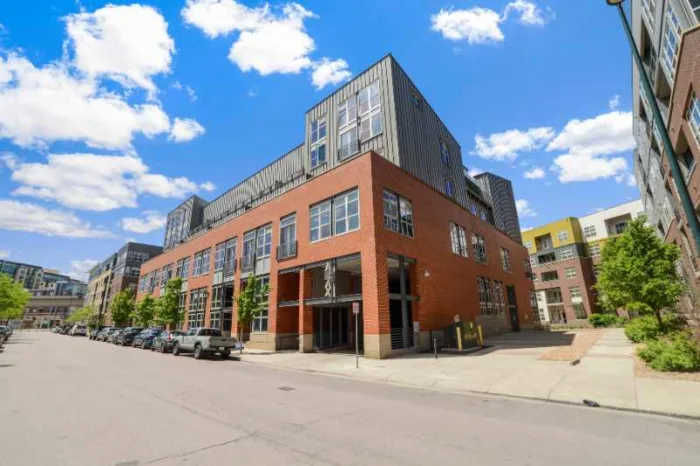Key takeaways
- Denver multifamily housing trends in 2025 remain resilient with strong rental demand and steady investment activity.
- Design trends emphasize sustainability, smart technology, and flexible living spaces.
- Developers face challenges from construction costs and affordability, but see opportunities in suburban and adaptive reuse projects.

Denver has become one of the most closely watched markets in the multifamily sector, and 2025 is shaping up to be another defining year. The city’s ongoing growth is fueled by steady population gains, a strong and diverse job market, and its continued appeal to young professionals seeking a vibrant urban lifestyle.
As new residents arrive, Denver multifamily developers are adapting to shifting renter expectations and broader housing market dynamics. As such, multifamily housing trends point toward more advanced amenities, flexible unit layouts, and properties designed with sustainability in mind.
This post will explore the trends of Denver’s multifamily market in 2025, highlight the most significant developments, and examine design innovations shaping the resident experience. We will also discuss what these changes mean for property owners and managers navigating this evolving landscape.
Navigate this post:
- What is the outlook for Denver real estate in 2025?
- 6 Denver multifamily market trends in 2025
- Challenges & risks facing Denver multifamily in 2025
- Opportunities for Denver multifamily developers and investors
- The role of technology in Denver’s multifamily market
- Multifamily market trends FAQs
What is the outlook for Denver real estate in 2025?
Several key factors are shaping the Denver real estate outlook for 2025. From macroeconomic pressures to ongoing population growth, each of these influences plays a role in how the market evolves:
- Higher interest rates and affordability. Rising rates continue to affect affordability across the metro area. Many residents who are priced out of homeownership are turning to rentals, which increases demand for multifamily properties.
- Migration and lifestyle appeal. Denver remains a magnet for new residents drawn by job opportunities, outdoor recreation, and its balanced urban lifestyle. This steady inflow of people adds pressure to an already limited housing supply.
- Supply constraints and development challenges. While new construction is underway, it is not keeping pace with demand. Denver multifamily developers are working to deliver new projects that combine more units with modern amenities. At the same time, developers must contend with rising construction costs and evolving regulations.
- Multifamily resilience and investor interest. Multifamily housing stands out as one of the stronger asset classes within the Denver real estate outlook for 2025. Multifamily housing market trends show that investors continue to favor these properties, as consistent rental demand provides reliable cash flows.
- Opportunities for owners and managers. For property managers and owners, 2025 brings both competition and opportunity. Strong fundamentals continue to support the multifamily sector even as broader real estate markets face uncertainty.
6 Denver multifamily market trends in 2025
- Rent growth and occupancy
- New construction pipeline
- Investor interest and lending environment
- Adaptive reuse and redevelopment
- Sustainability and green building standards
- Technology and smart building features
1. Rent growth and occupancy
Multifamily housing demand in Denver continues to hold steady, with rent growth expected to climb modestly through 2025. While affordability remains a challenge for some renters, strong employment and ongoing migration support healthy occupancy levels. Projections suggest occupancy will stay close to long-term averages, making the market appealing for owners seeking reliable cash flows.
2. New construction pipeline
The Denver multifamily market trends also show a robust pipeline of new construction. Much of the development is still concentrated in the urban core, catering to young professionals who prioritize access to jobs and amenities. Suburban areas are also attracting new projects as renters look for larger units, lower rents, and access to schools and green space. Denver multifamily developers face headwinds from construction costs and zoning hurdles, but projects that align with renter preferences continue to move forward.
3. Investor interest and lending environment
The Denver multifamily investment outlook remains resilient despite higher interest rates. Insights from CBRE and JPMorgan indicate that multifamily is still a preferred asset class because of its stable demand. Transaction activity is expected to pick up as pricing expectations adjust, while cap rates reflect higher borrowing costs. Lenders are selective yet active, focusing on properties with strong fundamentals and locations that demonstrate long-term renter appeal.
4. Adaptive reuse and redevelopment
Another trend shaping Denver multifamily housing in 2025 is adaptive reuse. Older office and retail buildings are being converted into residential units, helping ease supply constraints while revitalizing underused properties. These projects not only add to inventory but also meet demand for unique and centrally located housing options.
5. Sustainability and green building standards
Sustainability is playing a larger role in the Denver market as both residents and investors prioritize environmentally conscious living. Developers are incorporating energy-efficient systems, green roofs, and EV charging stations to attract eco-minded renters. Meeting sustainability standards also helps properties remain competitive and may provide access to financing incentives.
6. Technology and smart building features
Multifamily housing demand in Denver is increasingly tied to technology. Renters expect smart access control, high-speed internet, and integrated building management systems that improve convenience and security. Properties that adopt these innovations often achieve stronger leasing performance and tenant retention, making technology a key competitive differentiator in 2025.
Challenges & risks facing Denver multifamily in 2025
The Denver multifamily sector is positioned for growth in 2025, but several risks in multifamily housing continue to shape the outlook. One such challenge is increased construction costs. Materials remain expensive, and the limited availability of skilled labor has caused delays in project timelines. As such, these factors make it more difficult for developers to deliver new units on schedule and within budget.
Furthermore, financing has also become more complex. Higher interest rates affect both acquisitions and new construction loans, which limits investor flexibility and places additional pressure on project returns. Lenders are showing caution while prioritizing projects with strong fundamentals and proven demand.
Oversupply is another risk in certain submarkets. While overall demand remains strong, neighborhoods with concentrated new construction face slower lease-ups and competitive rent concessions. This oversupply could soften rental growth in pockets of the metro area.
Finally, housing affordability in 2025 remains strained, as rent growth outpaces income for many residents and renter migration brings in more diverse prospects. Properties that push rents risk higher vacancy and turnover. As such, owners and managers who align pricing strategies with resident needs are more likely to succeed in maintaining stability and occupancy.
Opportunities for Denver multifamily developers and investors
- Suburban multifamily growth
- Adaptive reuse projects
- Niche sectors with growth potential
- Tech-enabled buildings
Suburban multifamily growth
One of the strongest multifamily investment opportunities in Denver for 2025 is in the suburbs. As renters search for larger units, lower monthly rents, and access to schools and green space, suburban submarkets are attracting more attention.
Denver multifamily developers are responding by delivering mid-rise and garden-style communities that balance affordability with modern amenities. These areas often offer lower land costs and less competition, which can improve returns for investors while meeting the lifestyle needs of families and professionals moving out of the urban core.
Adaptive reuse projects
Adaptive reuse in Denver multifamily development is creating new opportunities by converting outdated office and retail spaces into residential units. This approach addresses two challenges at once: reducing commercial vacancy rates and expanding much-needed housing supply.
Adaptive reuse projects also appeal to renters who want character and central locations at potentially lower costs than new construction. Investors see these projects as a way to enter desirable neighborhoods while avoiding some of the high costs and delays tied to ground-up development.
Niche sectors with growth potential
Niche sectors are also becoming more attractive. Student housing near universities continues to show resilience, and build-to-rent communities are gaining traction with households that prefer single-family living but are not ready to buy. Both segments offer diversification and stable demand, making them appealing for investors seeking alternatives within the broader multifamily housing market.
Tech-enabled buildings
Technology is another driver of opportunity in Denver’s multifamily market. Smart access control, high-speed connectivity, and integrated building management systems not only attract residents but also appeal to investors who value efficiency and long-term competitiveness. Properties that adopt these features often see stronger leasing performance and improved asset value, reinforcing the importance of tech-enabled design in 2025.
The role of technology in Denver’s multifamily market
- Smart access control and intercom systems. Denver smart apartment technology is playing a major role in how residents interact with their communities. Access control systems for multifamily buildings, such as the ButterflyMX Video Intercom and Access Control System (ACS), allow residents to securely enter the property, grant access to guests, and manage entry from a smartphone. This level of convenience enhances the resident experience while also improving property security.
- Package management solutions for e-commerce growth. Online shopping continues to rise, creating a surge in deliveries to apartment communities. Proptech in Denver multifamily housing now includes dedicated package management solutions. These spaces provide secure, contactless delivery and pickup options, reducing staff burden and ensuring residents can retrieve items at their convenience.
- Building-wide connectivity as a competitive advantage. Reliable, high-speed internet is no longer optional but a core amenity. Building-wide connectivity helps properties stand out in a competitive leasing environment and supports residents’ work-from-home needs. Strong digital infrastructure also allows property managers to integrate more smart technologies, from energy management systems to cloud-based security tools.
- Investor and leasing appeal of proptech. Incorporating proptech into Denver multifamily developments increases both leasing performance and investment value. Residents are drawn to communities that offer convenience, security, and connectivity, while investors view these upgrades as a way to ensure long-term competitiveness. For Denver multifamily developers, adopting smart technologies creates a clear path to stronger demand and higher asset performance.
Multifamily market trends FAQs
What is the outlook for Denver real estate in 2025?
Denver real estate is expected to remain resilient, with multifamily housing leading the way due to steady population growth and strong rental demand.
Is Denver a good market for multifamily investment in 2025?
Yes, investor interest remains strong. Stable occupancy levels and long-term rental demand make Denver attractive, although financing costs and affordability challenges must be considered.
Where are most new multifamily developments in Denver?
Much of the new development pipeline is concentrated in urban neighborhoods such as River North (RiNo) and Capitol Hill. At the same time, suburban areas are experiencing more growth as renters seek larger spaces and relative affordability.
Disclaimer: This content is for informational purposes only, you should not construe any such information as legal, tax, investment, financial, or other advice. Nothing on our site constitutes a solicitation, recommendation, endorsement, or offer by ButterflyMX or any third-party service provider. ButterflyMX is not a financial adviser. You should always seek independent legal, financial, taxation, or other advice from a licensed professional.






